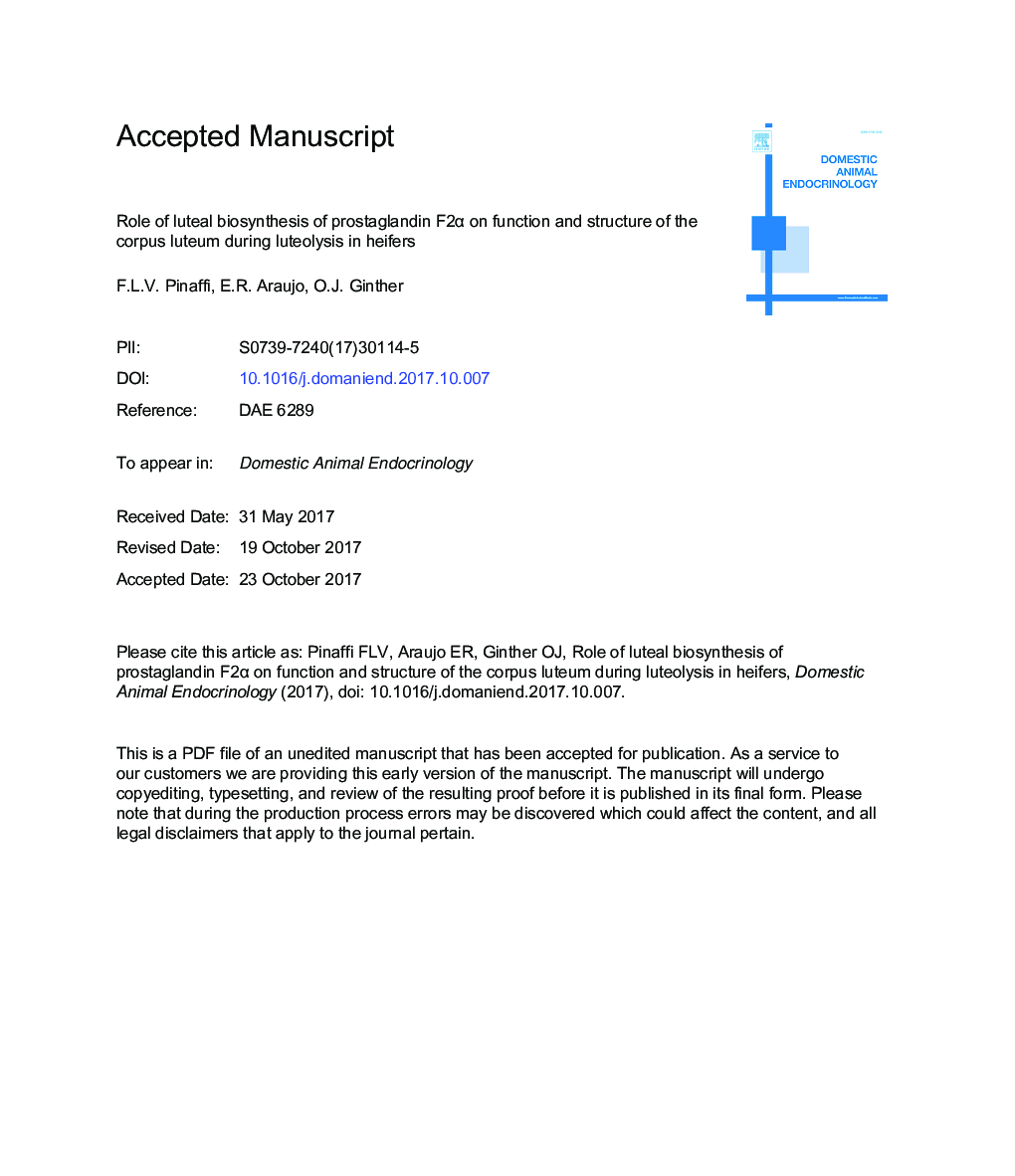| Article ID | Journal | Published Year | Pages | File Type |
|---|---|---|---|---|
| 8481933 | Domestic Animal Endocrinology | 2018 | 19 Pages |
Abstract
The role of endogenous prostaglandin F2α (PGF) in the induction of luteolysis by exogenous PGF was studied by simultaneous inhibition of endogenous PGF with flunixin meglumine (FM). Groups were controls (n = 8), PGF treated (n = 8), and FM + PGF treated (n = 9). Treatments were given 10 d postovulation at hours 0, 8, and 16. The protocol was based on (1) the assumption that luteolytic characteristics of exogenous PGF would be altered if the synthesis of endogenous PGF is simultaneously inhibited and (2) the reports that luteolysis involves a direct effect of uterine PGF on large luteal cells followed by an effect of the large cells on the small cells. At hour 48, progesterone concentration was greater in the controls (7.6 ± 0.8 ng/mL) than that in the FM + PGF group (3.0 ± 0.5 ng/mL) and lower in the PGF group (0.7 ± 0.3 ng/mL) than in the FM + PGF group (interaction, P < 0.0001). The effects of each of the 3 groups on percentage change in CL volume were similar to the effects on progesterone. At hour 48, the percentage of CL tissue with color-Doppler signals of blood flow was similar between the controls (56.2% ± 3.8%) and FM + PGF group (50.0% ± 6.4%) and lowest in the PGF group (15.6% ± 7.2%) (interaction, P < 0.0001). A resurgence in progesterone concentration began at hours 24 or 48 in 6 of 9 heifers in the FM + PGF group compared to 0 of 8 heifers in each of the other groups (P < 0.007). The progesterone resurgence in the FM + PGF group was associated with the maintenance of percentage of CL tissue with blood-flow signals. The experimental hypothesis that an inhibitor of endogenous PGF reduces the luteolytic response to exogenous PGF was supported.
Related Topics
Life Sciences
Agricultural and Biological Sciences
Animal Science and Zoology
Authors
F.L.V. Pinaffi, E.R. Araujo, O.J. Ginther,
